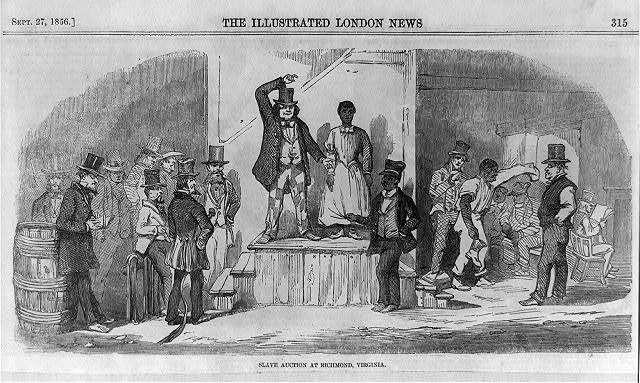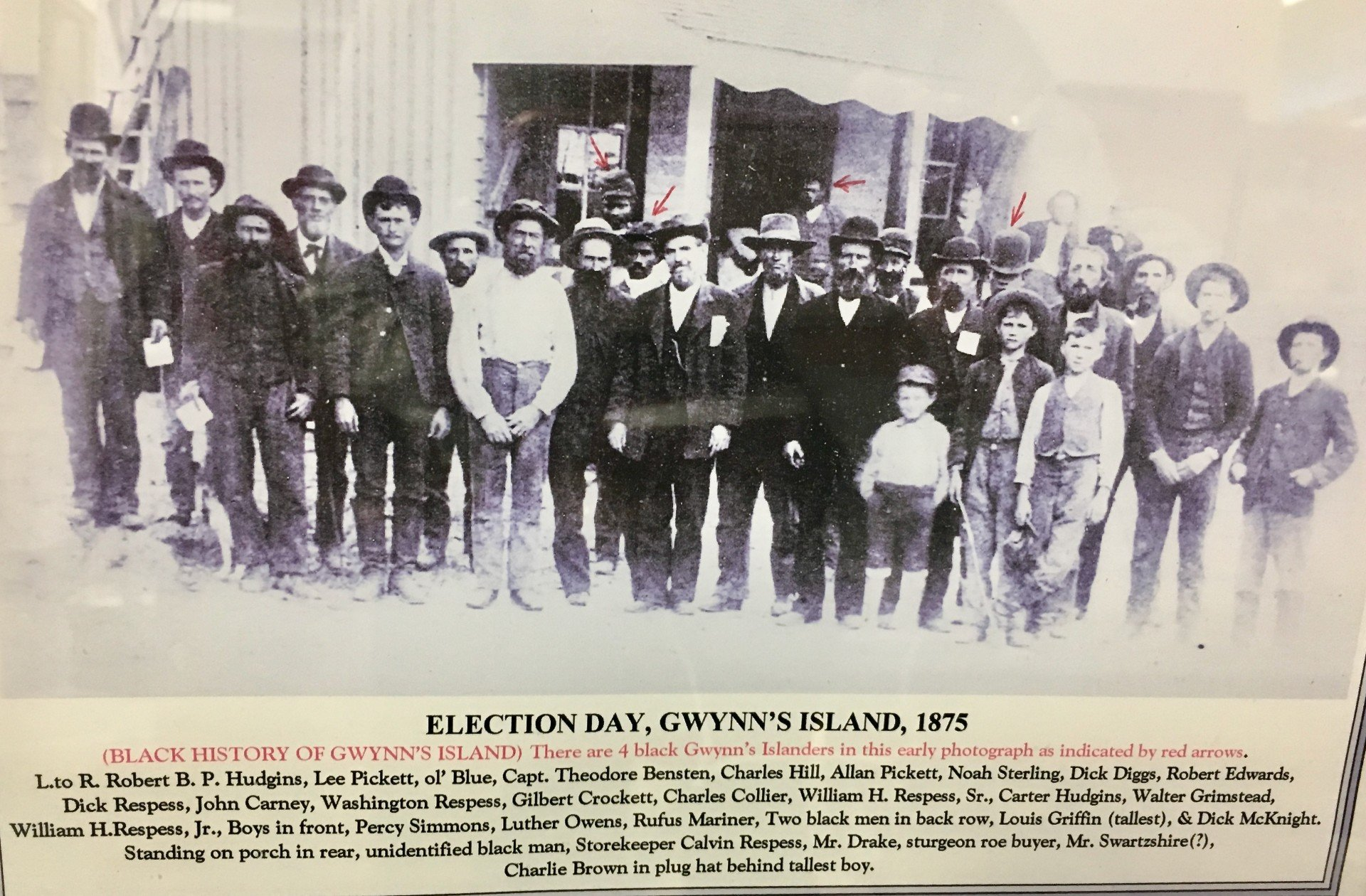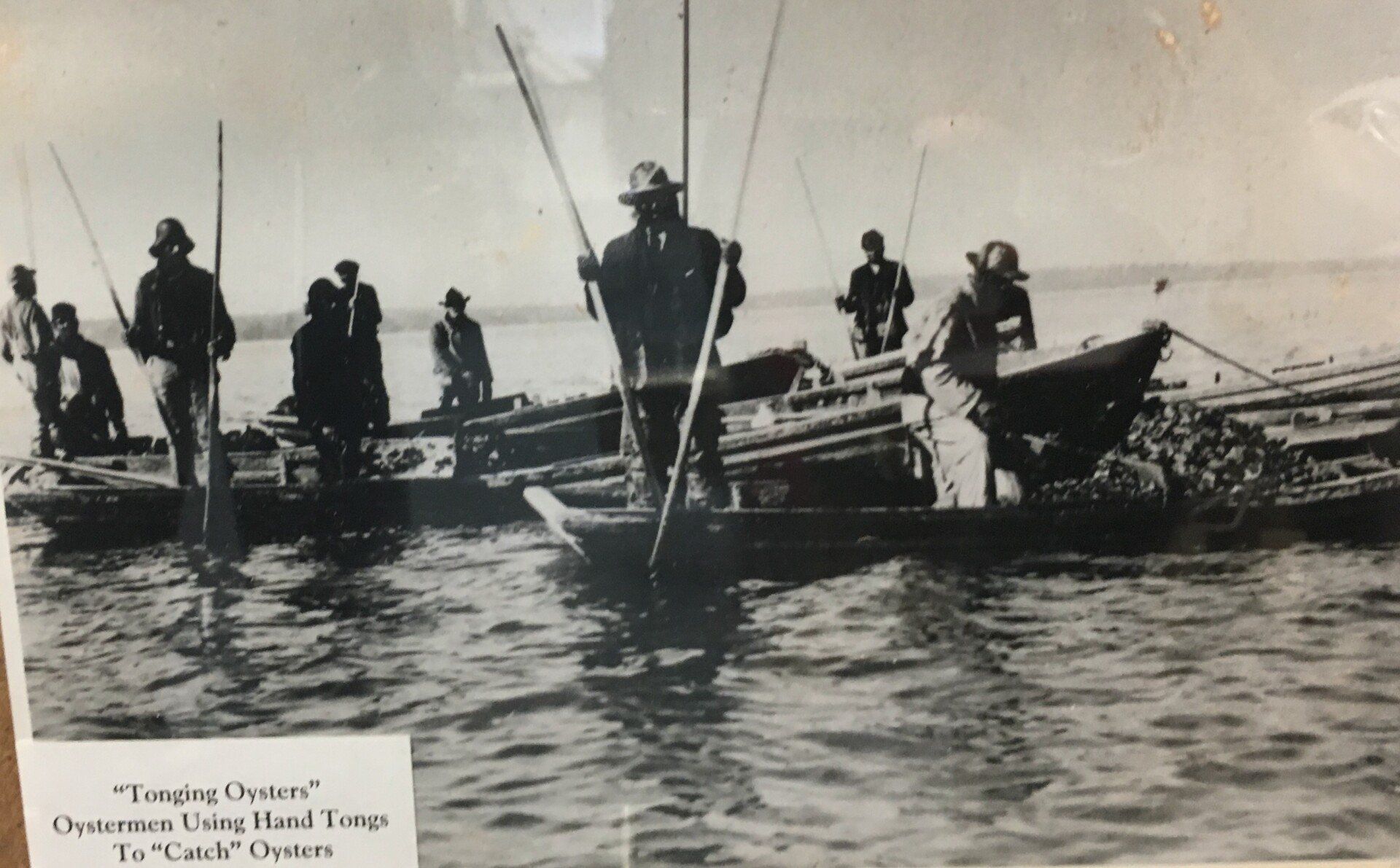History of Gwynn's Island
Click Timeline button to see a review of Virginia, Mathews County & Gwynn's Island history from 1607-1924
Native American Conquest
The original inhabitants of Gwynn's Island were Powhatan Indians.
The Powhatan dominated eastern Virginia when the English settled Jamestown in 1607.
When European settlers arrived "the region was occupied by more than 14,000 Powhatan, concentrated in some 200 villages along the rivers."
White settler Hugh Gwynn named the Island in the early 17th century, ignoring Powhatan claims.
African Slavery
Post Emancipation
Freed people and their former enslavers lived and worked side by side in an uneasy harmony induced by mutual need.
Men and women worked as fishermen, farmers, teachers, midwives, laborers, and domestic servants.
In 1866, the 500-acre Gwynnsville plantation was subdivided by white land speculators named DUTTON from neighboring Gloucester County.
The Duttons sold primarily to White men, with the exception of five parcels each of five acres or less to freedmen.
By 1910, more than 20 African American residents were property owners. They built a Baptist church, school and cemetery.
Meanwhile the White community was also prospering—raising money for a new school and the renovation of the White Baptist church—as well as building and expanding their own homes. All the same, newly married men often lived with their parents until they could purchase their own homes. The purchase of property by younger Black farmers and watermen from 1900 to 1910 might have worried these newly-married men.
Tensions flared as the Jim Crow era gained traction.
They harked back to stories of U.S. Colored Troops who had attacked the Island during the Civil War.
On the mainland, a Confederate monument was erected in 1912, an all-White housing development was announced in 1914, and the local high school was renamed for Robert E. Lee and Stonewall Jackson.
Pent-up resentment culminated in a concerted effort to drive the Black community off the Island in early 1916.













